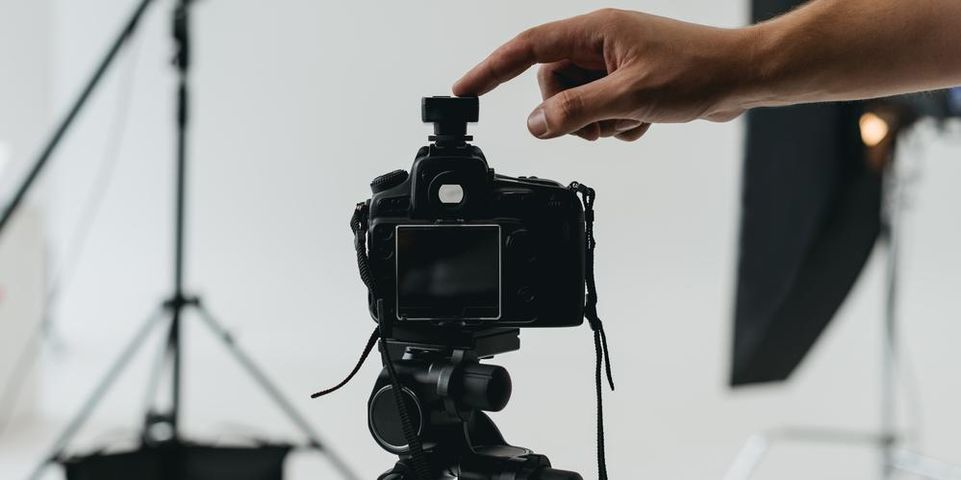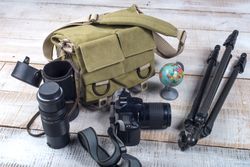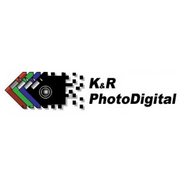
If you’re new to photography, you might be overwhelmed by the huge selection of cameras and types of photo equipment available. There are so many options it can be difficult to choose what's right for your project or overall artistic goals. Use the introduction to basic photography gear below to get acquainted with the tools you’ll need.
What You Need to Know About Basic Photo Equipment
Cameras
Cameras come in two basic output formats: film and digital.
For film cameras, you’ll need to ensure you’re buying the right film, loading it correctly, and following the right development process (or taking them to a developer). There are many kinds of analog cameras, from 35mm single-lens reflexes (SLR) to large formats.
Digital cameras produce an electronic image file. The advantage of digital cameras is that most memory cards have significant storage space, so you can take and instantly review many practice shots. Digital cameras also come in many varieties, from standard compact point-and-shoot to digital single-lens reflexes (DSLR).
Broadly speaking, point-and-shoot cameras are simplest to use. Other styles will give you enhanced control of your image quality, but take longer to learn.
Bags
 Once you’ve chosen your camera, protect your equipment with the proper camera bag. Camera bags must be large enough to accommodate your equipment but small enough to be easily portable. They should offer impact protection and feature soft dividers to keep your camera body, lenses, and flash equipment safely separated. You may want more than one bag – for instance, one for action photography and one for still life, portrait, and landscape photos.
Once you’ve chosen your camera, protect your equipment with the proper camera bag. Camera bags must be large enough to accommodate your equipment but small enough to be easily portable. They should offer impact protection and feature soft dividers to keep your camera body, lenses, and flash equipment safely separated. You may want more than one bag – for instance, one for action photography and one for still life, portrait, and landscape photos.
Flashes
Some cameras have a built-in flash to provide enough light to illuminate your subject. Others require you to buy an external flash, which mounts to the top of your camera via a "hot shoe" connector and illuminates when you snap a photo. The external flash connects to the camera via a cord, enabling you to move the light source around and achieve lighting effects that are impossible with a built-in flash.
Tripods
Tripods are three-legged supports that keep your camera steady and prevent shaky or blurred images. They’re particularly useful in low-light situations because the shutter must stay open longer to allow in enough light, and any movement could blur the photo. Tripods are also essential when using a telephoto lens to shoot at a distance, because the distance magnifies even the slightest motion.
For a wide selection of quality photo equipment, stop by K & R Photographics, a full service camera store in Ft. Mitchell, KY. They've been serving camera enthusiasts and advanced photographers in the Greater Cincinnati area since 1975. Their experts will help you choose exactly what you want. They carry everything you need to start or continue your photography skills, including film and digital cameras, digital accessories, software, and computer storage. Check out their website to view location details or call them at (859) 341-6986 for advice on buying your first photo equipment kit.
About the Business
Have a question? Ask the experts!
Send your question

